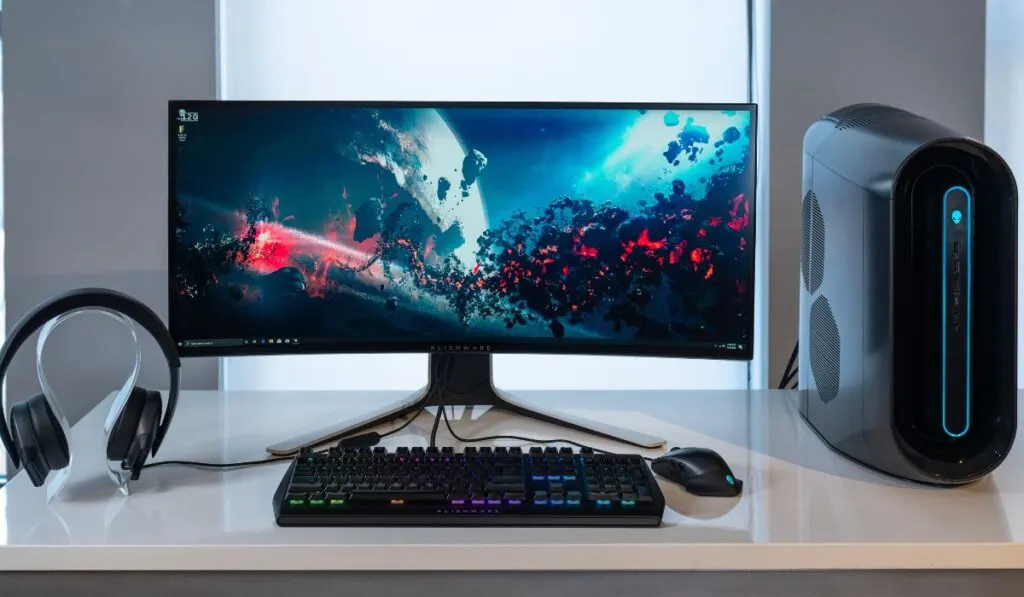Framerates are essential in gaming. Many gamers will choose FPS over graphical detail. There is a sensible reason for this—the more frame per second, the more precise your response time.
Hertz and FPS are comparable measurements. Frames per second represent the number of frames your GPU can generate in a second, while Hz represents the speed at which a monitor can display images per second. So 144 Hz equates to 144 FPS.
So why do some people say that 144 Hz equals fewer frames? Is there any truth to it, or is it a misunderstanding because there are no clear industry standards for Hertz or FPS? To get a better idea of the question, let’s look at Hertz and FPS.
What is 144Hz?

To answer this question, we need to understand what Hertz represents regarding monitors. Hertz is different from frames per second. A screen’s Hz represents how rapidly it can refresh to display new information.
The distinction between Hz and FPS sounds murky but think of it like this:
FPS represents the number of frames your GPU generates every second. Hertz represents how quickly your monitor can turn the data from your GPU into pixels and display those as images before repeating the process for the next frame’s data.
Luckily, FPS and Hertz correlate. Sixty frames per second require a monitor capable of 60 Hz to display as intended. Using this simple principle, we see that 144 Hz means the monitor can refresh 144 times a second and display 144 frames each second.
What is FPS?
Frames per second represent the number of frames your GPU can render in one-second intervals. The benefit of higher frames per second is twofold.
- First, it allows for more precision in your response time. That can be the deciding factor when it comes to first-person shooters.
- Second, it creates a smoother, more immersive gaming experience. Thirty frames per second are enough to trick your brain into believing a sequence of static frames are events happening concurrently.
In general, the higher the framerate, the more impressive the graphics will be to you, but people disagree on the value of higher framerate ultimately. It’s a personal preference, with many gladly gaming their entire lives at 30fps and having just as much fun.
There are also factors that can improve graphics but affect the frame rate, such as ray tracing.
The Big Framerate Debate
Scientists, general practitioners, and optometrists mostly believe that the human eye can’t detect much more than 60 FPS.
And before we chuck the science out the window, there are peer-reviewed medical studies that back their claim. Whether or not you can see the difference between 60 and 120 FPS, both provide a more immersive experience.
Once we reach 144 FPS, the medical possibility that you could see a difference becomes close to zero.
Using the information from scientific studies, the maximum threshold for a human to perceive higher FPS might lie between 60 and 120 Hz. So by that standard, a 144 Hz monitor can display frames to spare.
As for the option to utilize 144 Hz, many games might not give you a choice. That is because games depend on FPS for other functions in the game.
The “standard” steps in monitor hertz are 30 Hz, 60 Hz, 120 Hz, and 240 Hz. Most games will offer FPS rates that correspond accordingly.
Will the FPS Be Affected By a 144Hz Monitor?

No, to the contrary, the monitor will have frames to spare. Your games will still run at 120 FPS, so you will use just 120 Hz of your 144 Hz monitor. The correlation between Hz and FPS always remains.
If you go from a 240 Hz monitor to a 144 Hz monitor, your frames per second will be lower. But, once again, these numbers are meaningless. Humans cannot see near the equivalent of 240 FPS.
Worse still, your system will render FPS according to the game’s setting, and every frame over 120 FPS (at most) is just a waste of computational power.
144Hz vs. 165Hz: Is There a Difference?
Yes. A 144 Hz screen can display up to 144 FPS, while a 165 Hz display can go as high as 165 FPS. That amounts to a 13% increase in framerates.
However, if the science is to be believed, the difference between them will make no difference to your gaming experience. So the final verdict comes down to your opinion of which screen looks best.
